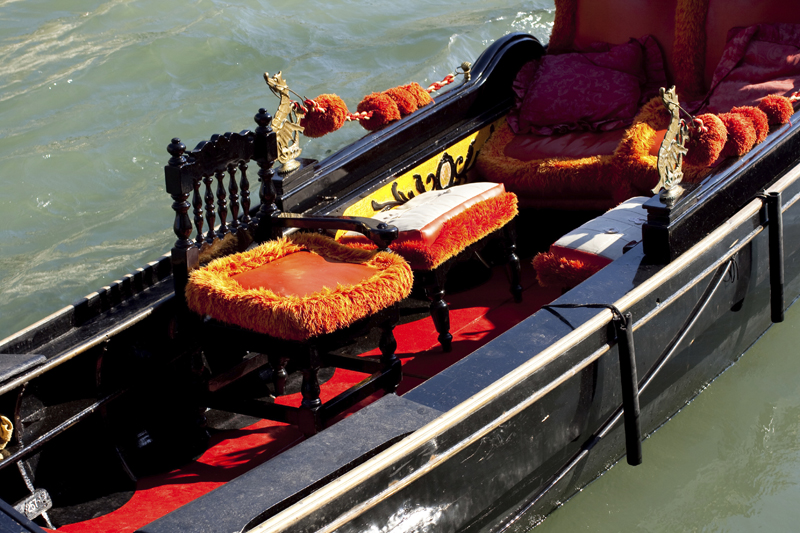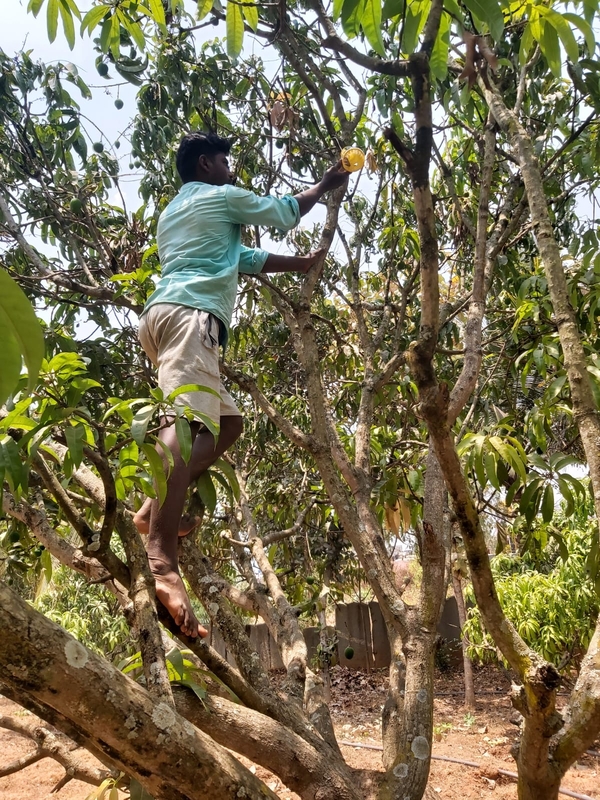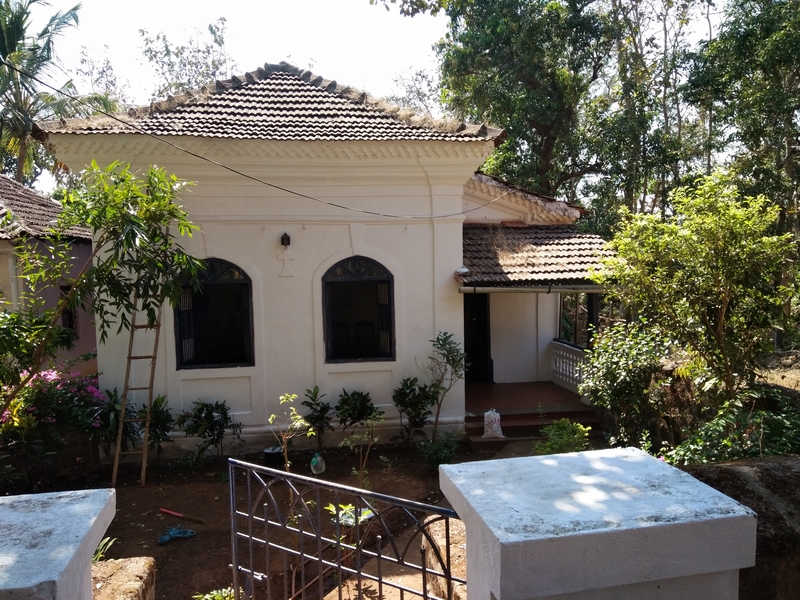The Boabs of Madagascar

Since I had written a lot on Madagascar and its loss of its rare primates recently, since I am an environmental journalist, Madagascar beckoned to see for myself, if it is the paradise it is made out to be. An island country in the Indian Ocean , off the southeastern coast of Africa, Madagascar is a legendary unspoilt and untouched land. The republic of Madagascar, previously known as the Malagasy Republic, is a Shangrila where one can view the most amazing flora and fauna in the world. One of the last bastions of the planet before man decided to intrude.
As I write this, Presidential elections in Madagascar have been pushed to late October 2013. So, for visitors, and travelers, the time to go is now, before the country reappears in travel agents’ windows and becomes expensive. Be prepared to be overwhelmed: in both fauna and landscapes, the world’s fourth-biggest island is otherworldly. To those seeking a place out of the ordinary, Madagascar cannot fail to cause those excited and breathless exclamations of awe.
Once we landed we had to change our dollars to Malagasy ariary. "Our population is not like India. We are just 22.9 million unlike your billions," said the chatty money changer as notes and signatures changed hands. "We live with a Caretaker government and our president is Andry Rajoelina," he said while we could hear French being spoken all around us. The official languages are the singsong and pretty French and Malagasy which is also heard everywhere.
Had heard about the Avenue of the Baobabs, also known as the Alley of Baobabs, famous trees which can be seen across Africa, but not the specimens all in one place as this avenue. The Avenue of Baobabs also known as boab, boaboa, bottle tree and upside-down tree, is an amazing group of massive baobab trees, lining the dirt road between Morondava and Belon'i Tsiribihina in the Menabe region in western Madagascar Given temporary protected status in July 2007 by the Ministry of Environment, Water and Forests, plus local conservation efforts, have helped towards making it Madagascar's first national monument.
The avenue consists of a dozen trees which are about 30 meters in height, of the Adansonia grandidieri species, which are native to Madagascar. Baobab trees can grow up to 800 years old, known locally as renala which in Malagasy means "mother of the forest". These are what are left of the dense tropical forests that once thrived on Madagascar. The trees did not originally tower in isolation over the sere landscape of scrub but stood in dense forest. Over the years, as the country's population grew, the forests were cleared for agriculture, leaving only the baobab trees, which the locals preserved as much in respect as for their value as a food source and building material.
Despite its popularity as a tourist destination, the area has no visitor center or gate fees, and local residents receive little income from tourism. This avenue could quite easily be considered one of the 7 Wonders of Africa as some of the trees, Adansonia grandidieri, are over 800 years old and reach a height of 30+ meters. A photographers paradise the avenue is especially beautiful at sunset.
A visit to the Isalo National Park in the Ihorombe region is a must while in Madagascar. The park is known for its wide variety of terrain, which includes sandstone formations, deep canyons, palm-lined oases and grassland. Home to some of Madagascar’s most stunning scenery, the park is a sacred place for the Bara tribe, whose burial sites are marked by mounds of tiny stones placed in crevices in the rock face. Hiking up to the massif, visitors enter a barren wonderland of twisted rock formations and extraordinary plants, shimmering in the heat of the plateau. Squat elephant’s foot plants cling to the rocks, a few dry grasses blow in the wind, and succulent aloes thrive in this area.
A plethora of wildlife can be found in the numerous shady gorges and cool running streams that carve through the rock face. Deciduous woodland grows in each canyon’s higher levels, and it is here that the endangered lemurs are found. Brown lemurs feed on the fruit amongst the branches, Verreaux’s sifakas leap from rock to rock, and troops of cheeky ringtails wander along the pathways.
When one descends deeper into the gorges, only a few shafts of sunlight penetrate to the streams below, and dripping mosses and ferns line the walls. Here and there in the stream are tiny rock pools amongst the rocks. The clear air, tumbling waterfalls, and cool water of the streams, are a wonderful respite from a hot day’s hiking on the plateau.
The Rova of Antananarivo is a royal palace complex in Madagascar that served as the home of the sovereigns of the Kingdom of Imerina in the 17th and 18th centuries, as well as the rulers of the Kingdom of Madagascar in the 19th century. In the heart of the oldest part of Madagascar's capital city, Antananarivo, there is a royal palace complex, called Rova. There, you can see the ruins of the Queen's Palace, the Palace of Andafiavaratra and the Rova Palace of Justice, as well as the Royal village's cathedrals and residences.
The Queen's Palace, built in the mid-1800s, was originally made of wood, but Queen Ranavalona II had the entire palace encased in stone in 1867 by French architect James Cameron.
However, the building, which is also called the Manjakamiadana, was almost entirely consumed by a fire in 1995. All that remains in one wall, but a project began in 2006 to restore the building to its former glory - this time out of cement instead of wood. Surrounding the Andafiavaratra Palace is Andohalo an area filled with traditional colonial homes and cathedrals. Strolling down the cobblestone streets, one can immediately imagine life in Madagascar for the early British settlers.
As I write this, Presidential elections in Madagascar have been pushed to late October 2013. So, for visitors, and travelers, the time to go is now, before the country reappears in travel agents’ windows and becomes expensive. Be prepared to be overwhelmed: in both fauna and landscapes, the world’s fourth-biggest island is otherworldly. To those seeking a place out of the ordinary, Madagascar cannot fail to cause those excited and breathless exclamations of awe.
Once we landed we had to change our dollars to Malagasy ariary. "Our population is not like India. We are just 22.9 million unlike your billions," said the chatty money changer as notes and signatures changed hands. "We live with a Caretaker government and our president is Andry Rajoelina," he said while we could hear French being spoken all around us. The official languages are the singsong and pretty French and Malagasy which is also heard everywhere.
Had heard about the Avenue of the Baobabs, also known as the Alley of Baobabs, famous trees which can be seen across Africa, but not the specimens all in one place as this avenue. The Avenue of Baobabs also known as boab, boaboa, bottle tree and upside-down tree, is an amazing group of massive baobab trees, lining the dirt road between Morondava and Belon'i Tsiribihina in the Menabe region in western Madagascar Given temporary protected status in July 2007 by the Ministry of Environment, Water and Forests, plus local conservation efforts, have helped towards making it Madagascar's first national monument.
The avenue consists of a dozen trees which are about 30 meters in height, of the Adansonia grandidieri species, which are native to Madagascar. Baobab trees can grow up to 800 years old, known locally as renala which in Malagasy means "mother of the forest". These are what are left of the dense tropical forests that once thrived on Madagascar. The trees did not originally tower in isolation over the sere landscape of scrub but stood in dense forest. Over the years, as the country's population grew, the forests were cleared for agriculture, leaving only the baobab trees, which the locals preserved as much in respect as for their value as a food source and building material.
Despite its popularity as a tourist destination, the area has no visitor center or gate fees, and local residents receive little income from tourism. This avenue could quite easily be considered one of the 7 Wonders of Africa as some of the trees, Adansonia grandidieri, are over 800 years old and reach a height of 30+ meters. A photographers paradise the avenue is especially beautiful at sunset.
A visit to the Isalo National Park in the Ihorombe region is a must while in Madagascar. The park is known for its wide variety of terrain, which includes sandstone formations, deep canyons, palm-lined oases and grassland. Home to some of Madagascar’s most stunning scenery, the park is a sacred place for the Bara tribe, whose burial sites are marked by mounds of tiny stones placed in crevices in the rock face. Hiking up to the massif, visitors enter a barren wonderland of twisted rock formations and extraordinary plants, shimmering in the heat of the plateau. Squat elephant’s foot plants cling to the rocks, a few dry grasses blow in the wind, and succulent aloes thrive in this area.
A plethora of wildlife can be found in the numerous shady gorges and cool running streams that carve through the rock face. Deciduous woodland grows in each canyon’s higher levels, and it is here that the endangered lemurs are found. Brown lemurs feed on the fruit amongst the branches, Verreaux’s sifakas leap from rock to rock, and troops of cheeky ringtails wander along the pathways.
When one descends deeper into the gorges, only a few shafts of sunlight penetrate to the streams below, and dripping mosses and ferns line the walls. Here and there in the stream are tiny rock pools amongst the rocks. The clear air, tumbling waterfalls, and cool water of the streams, are a wonderful respite from a hot day’s hiking on the plateau.
The Rova of Antananarivo is a royal palace complex in Madagascar that served as the home of the sovereigns of the Kingdom of Imerina in the 17th and 18th centuries, as well as the rulers of the Kingdom of Madagascar in the 19th century. In the heart of the oldest part of Madagascar's capital city, Antananarivo, there is a royal palace complex, called Rova. There, you can see the ruins of the Queen's Palace, the Palace of Andafiavaratra and the Rova Palace of Justice, as well as the Royal village's cathedrals and residences.
The Queen's Palace, built in the mid-1800s, was originally made of wood, but Queen Ranavalona II had the entire palace encased in stone in 1867 by French architect James Cameron.
However, the building, which is also called the Manjakamiadana, was almost entirely consumed by a fire in 1995. All that remains in one wall, but a project began in 2006 to restore the building to its former glory - this time out of cement instead of wood. Surrounding the Andafiavaratra Palace is Andohalo an area filled with traditional colonial homes and cathedrals. Strolling down the cobblestone streets, one can immediately imagine life in Madagascar for the early British settlers.

Related Articles
Editor's Picks Articles
Top Ten Articles
Previous Features
Site Map
Content copyright © 2023 by Marianne de Nazareth. All rights reserved.
This content was written by Marianne de Nazareth. If you wish to use this content in any manner, you need written permission. Contact Marianne de Nazareth for details.





 -resizeimage.jpg.jpg)

